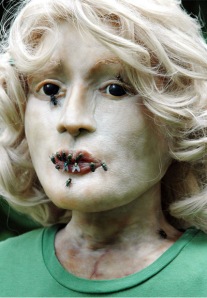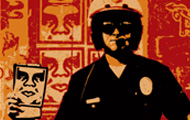Mourning the recent sale of my childhood home in upstate New York, I took the Massachusetts Bay...
Institute of Contemporary Art Boston
Dandelion greens can be good for you and the price is right (free). But dandy as...
If Heide Hatry’s provocative photographic show—Heads and Tales--at the Peirre Menard Gallery, (10 Arrow St. in Cambridge)...
The Boston arrest of street artist Shepard Fairey, along with the AP suit and countersuit concerning a...
Kudos to Boston's Institute for Contemporary Art for mounting a spectacular 20-year restrospective of Shepard Fairey's work--which...
On a freezing cold January afternoon, my companion and I decided on a quick getaway to Boston's...


